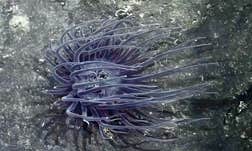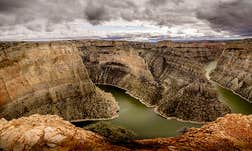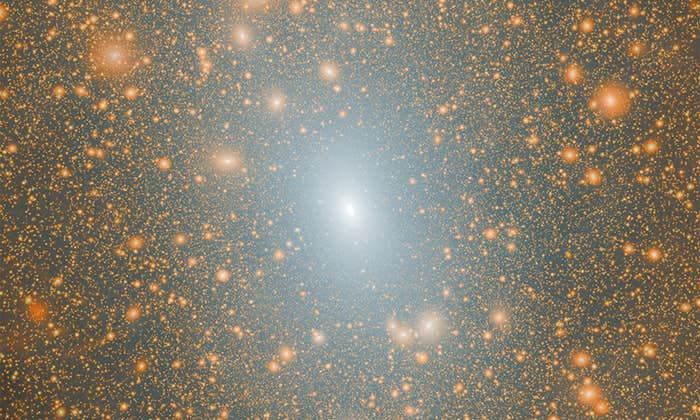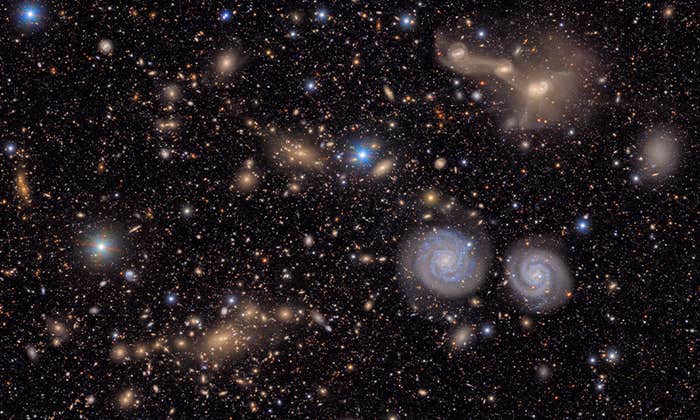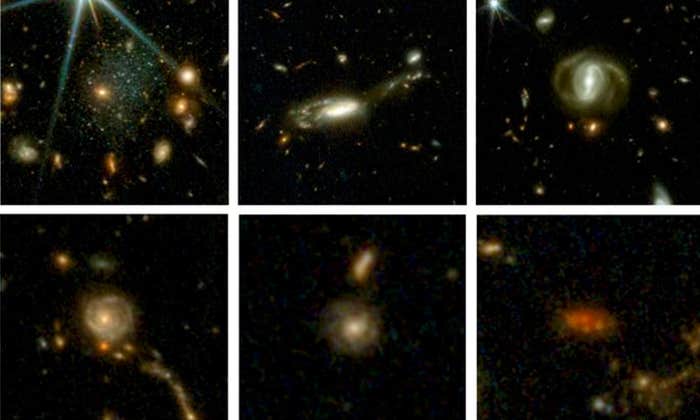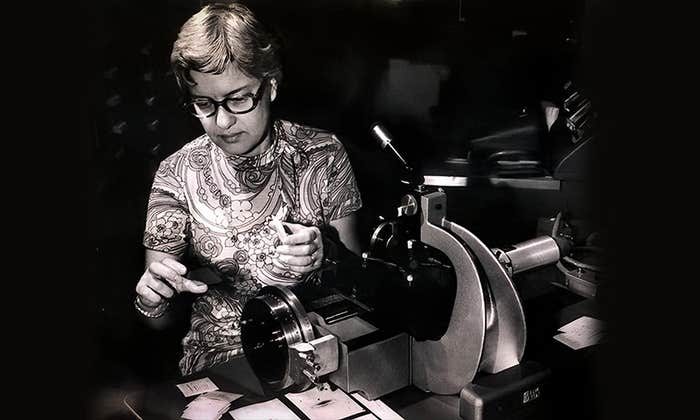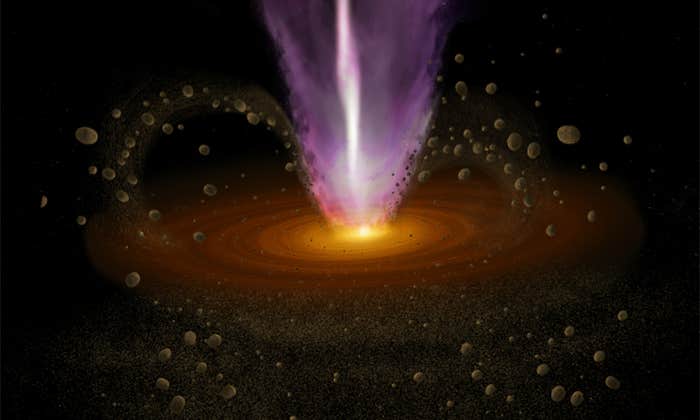Like countless so-crazy-it-just-might-work schemes, this one began with a gripe session. In the fall of 2011, Roberto Abraham and Pieter van Dokkum were commiserating at a Nepalese restaurant in Toronto. Over curry and rice—and a generous quantity of beer—the old friends bemoaned a problem they’d discussed many times before.
As observational cosmologists, they shared a professional interest in how galaxies are born and evolve. The leading theory, known as hierarchical galaxy formation, describes this growth as a long scaling up, from little to big, simple to complex. In the beginning, just a few thousand years after the Big Bang, almost all mass was dark matter—that mysterious, unseen counterpart to ordinary, luminous matter. But dark matter didn’t spread evenly across the infant universe, and soon denser pockets began to clump together, condensing into roughly spherical bundles under gravity’s pull. As these “dark matter halos” grew larger and more compact, gases gathered in their cores, fueling stars—the first galaxies. Over billions of years, galaxies collided and merged into bigger and bigger systems, eventually creating brilliant cosmic behemoths like our own Milky Way.
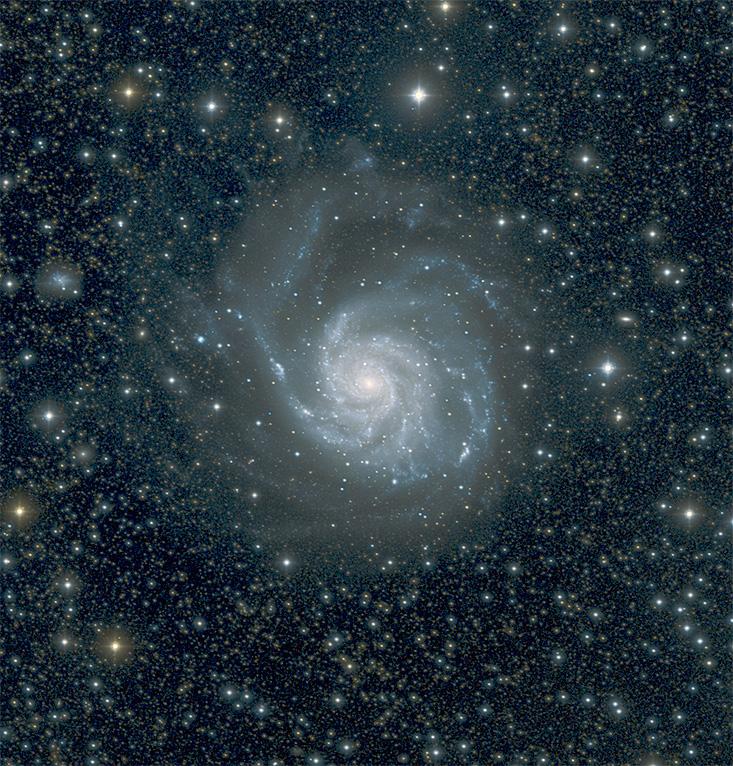
Testing this theory, however, wasn’t easy. Modelers were continually spitting out predictions about galaxy structure and behavior that, if observed in the actual universe, would refine the story and give it credence. But more often than not, astronomers like Abraham and van Dokkum found they could neither support nor refute the models using current telescopes. “We were frustrated because we couldn’t push the existing technology further,” says van Dokkum, a professor at Yale University.
They were also frustrated with how cumbersome astronomy had become: Modern astronomical projects are typically large-scale affairs, requiring a small fortune, a mountain of paperwork, and plenty of patience. “You have to envision ways to get $10 million and put a team together, and even then, you only know if things will come to fruition a decade later,” says Abraham, a professor at the University of Toronto.
There had to be a better approach. As their conversation deepened, he and van Dokkum mused about whether a couple of plucky cosmologists could strike out on their own. They fantasized about finding a quick-and-dirty way to put the theory of hierarchical galaxy formation to the test. But how?
Would they finally detect the delicate, shadowy structures surrounding galaxies that cosmologists had long been searching for?
Then gradually, unexpectedly, an answer presented itself. According to one long-standing prediction, big galaxies like the Milky Way should sit in vast, disorderly fields of debris—ejected stars, half-eaten halos, and other remnants of the violent collisions that created them. Computer models show these galaxies surrounded by wispy knots, bulges, and streams of matter. Hundreds to thousands of faint, dark-matter-rich “dwarf” galaxies whirl around them. As Abraham has put it, “Every galaxy should look like a squashed bug.”
Seen through current telescopes, though, galaxies appear smooth and symmetrical—classical spirals and ellipses. This might suggest that cosmologists’ theory about galactic evolution is wrong. But more likely, Abraham and van Dokkum surmised, conventional telescopes simply can’t pick out the dim, diffuse rubble swirling beyond a galaxy’s bright center.
The problem isn’t a matter of telescope size. Larger and larger mirrors have allowed astronomers to peer deeper and deeper into space and time, descrying extraordinarily faint pinpoints of light from the early universe. But when researchers try to survey diffuse matter spread across a large swatch of sky, such as the halo around a nearby galaxy, they run into trouble. Tiny irregularities in a mirror’s reflective surface scatter the incoming light, polluting the image with ghosts and other artifacts that obscure the real data.
Suddenly, swallowing another swig of beer, van Dokkum realized he might know of a way out of this predicament. He’d made a hobby of wildlife photography (he recently published a collection of photos of dragonflies), and kept up with camera trends. “I had heard about these awesome new telephoto lenses,” he says. The Japanese optics corporation Canon had started producing high-end lenses coated with a proprietary film of nano-sized cones. By deflecting errant light away from a camera’s detector, Canon claimed, the cones effectively eliminated the effects of scattering. Photographers could now get crisp, true-to-life images—no more ghosts or flares.
Van Dokkum wondered aloud: What would happen if he and Abraham turned lenses like these on the cosmos? Would they finally detect the delicate, shadowy structures surrounding galaxies that cosmologists had long been searching for?
With a 14-centimeter aperture,1 one Canon lens wouldn’t reveal much: It would take weeks of nightly exposures just to collect enough light to make out the kind of dim objects the cosmologists hoped to see. And that was assuming perfect weather and no technical hiccups. But what if they added more lenses? By imaging galaxies through multiple lenses simultaneously, like a dragonfly’s compound eye, they could capture fainter structures in less time, while also correcting for errors.
“For me, the whole conversation was somehow theoretical,” van Dokkum recalls. “But Bob said, ‘You know, why don’t we just do it? Like, actually build it?’ ”
They would call their creation Dragonfly.
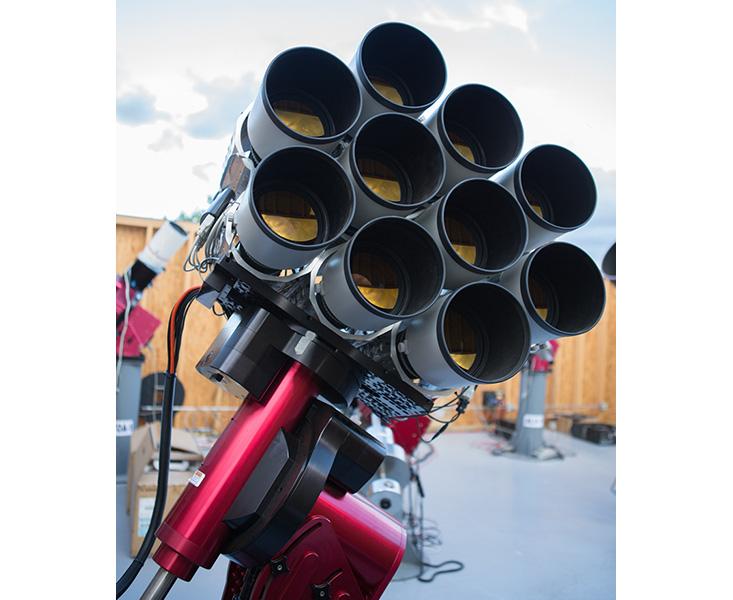
Within a few months, Abraham and van Dokkum had scraped together about $15,000 in research funds to buy one of the new Canon lenses and accompanying equipment. In March of 2012, they drove it up to the Mont-Mégantic Dark Sky Preserve, in Quebec, to test it out: Would the coating of nanocones prove as revolutionary as Canon claimed?
In a snowy parking lot filled with amateur stargazers, they attached the lens to a camera, mounted it on a tripod, and trained the diminutive telescope on a spiral galaxy known as M51. First observed in the late 1700s, M51 has been intensely studied and photographed for centuries. But after a two-hour exposure, Canon’s lens captured a sight that scientists had only gleaned hints of before: Extending far beyond M51’s bright central spiral was a distinct halo of diffuse matter. “We quickly realized that the lens really was as outstanding as we had hoped,” van Dokkum says.
It took them another few months to raise the money for two more lenses and other off-the-shelf parts to build Dragonfly. They paired each lens with a digital camera and focuser, and wired everything to a Mac mini. (To minimize reboots, each lens now operates via its own thumb drive-sized controller, which communicates wirelessly with a master computer.) They encased the lenses in protective metal cylinders, which they then bolted together on a custom-made mount, so that all of Dragonfly’s eyes would point at the same spot in the sky. Abraham wrote software that would combine the three nearly identical snapshots into a single image.
In September 2012, they shipped Dragonfly to a telescope-hosting site in southern New Mexico, where they could count on clear skies most nights. “We literally Fed-Exed our equipment, booked flights, and set it up before that month was out,” van Dokkum says.
“Everybody knew large diffuse galaxies don’t exist. So they never thought to look for them.”
Back at their home universities, they could control Dragonfly over the Internet, at their whim. The ease and freedom was exhilarating. “If we decide that tonight we want to observe Saturn, we can do it,” van Dokkum says. “That amount of creativity and flexibility is incredibly rare [in astronomy].”
By 2013, they had upgraded Dragonfly to eight lenses, and in 2014, they published their first significant discovery. With Allison Merritt, a graduate student at Yale, they imaged a large spiral galaxy known as M101, or the Pinwheel Galaxy. In the field around it, they identified seven dwarf galaxies that no one had seen before. But when they analyzed the data, they found that only three of these dwarfs were orbiting M101. Models predicted hundreds. Where were the rest?
It’s possible that many of M101’s satellites are too dim for Dragonfly to see. There may even be “naked” halos orbiting the galaxy that have no stars at all. But Abraham and van Dokkum say the paucity of brighter dwarfs is strange. “If Dragonfly fails to find these satellites [around other galaxies], then either the theory of hierarchical galaxy formation is totally wrong, or there’s some physics that prevents stars from forming or tears them up,” Abraham says. “I suspect it’s the latter—nature’s got surprising ways of getting rid of stars or never allowing them to form in the first place.”
In addition to dwarf satellites, the researchers expected to see a halo of rubble around M101. Dragonfly, they knew, was sensitive enough to detect it. But the telescope revealed nothing—the halo was conspicuously absent. What do the rabble-rousing astronomers make of that fact? “Not much,” van Dokkum says. “You can’t rule out a whole class of theories based on one object.”
The findings from M101 convinced them to begin a systematic survey. They got a grant to image 20 to 30 galaxies in three years, and recruited another graduate student, Jielai Zhang, at the University of Toronto. (They expect to publish the first results by 2017.)
Meanwhile, Dragonfly grew, to 10 lenses, then 24, and soon 48 (plus two guiding lenses). “At 50 [lenses], we’re effectively the world’s largest working refractor telescope,” Abraham says. The upgrades have drastically sped up the time it takes to produce an image, from weeks to hours. And although the telescope is still technically a prototype, it is already expanding the catalog of objects in the known universe.
Recently, for example, Abraham and van Dokkum took a break from the galaxy survey to—why not!—image the Coma Cluster, a crowded agglomeration of galaxies 300 million light-years from Earth. To the scientists’ amazement, the portrait revealed dozens of massive galaxies that were curiously dim. As big as the Milky Way, these “ultra-diffuse” galaxies emit only about a thousandth of its light.
Current models say that such galaxies shouldn’t exist. But here they were, smack dab in the teeming, crash-happy Coma Cluster. “They must be held together by a lot of dark matter,” van Dokkum says. “Otherwise they would just be ripped apart very quickly.”
Inspired by this finding, Jin Koda, an astronomer at Stony Brook University, in New York, and his colleagues pored over archival Coma images taken by the powerful Subaru telescope atop Mauna Kea, in Hawaii. Using the Dragonfly data as a guide, they found hundreds more examples of ultra-diffuse galaxies that had been previously overlooked or dismissed as artifacts. “Everybody knew large diffuse galaxies don’t exist,” van Dokkum says. “So they never thought to look for them.”
In Abraham’s view, Dragonfly is a “sort of pathfinder” to deeper research. “This little telescope is really good at finding these hard-to-detect things, but to really understand them, you need a big telescope in Hawaii, or in space.” Scattering may prevent large reflectors from revealing diffuse structures like halos and dwarf galaxies. But once Dragonfly spots them, astronomers can then use these big mirrors to zoom in on a particular object, allowing them to study it in much greater detail.
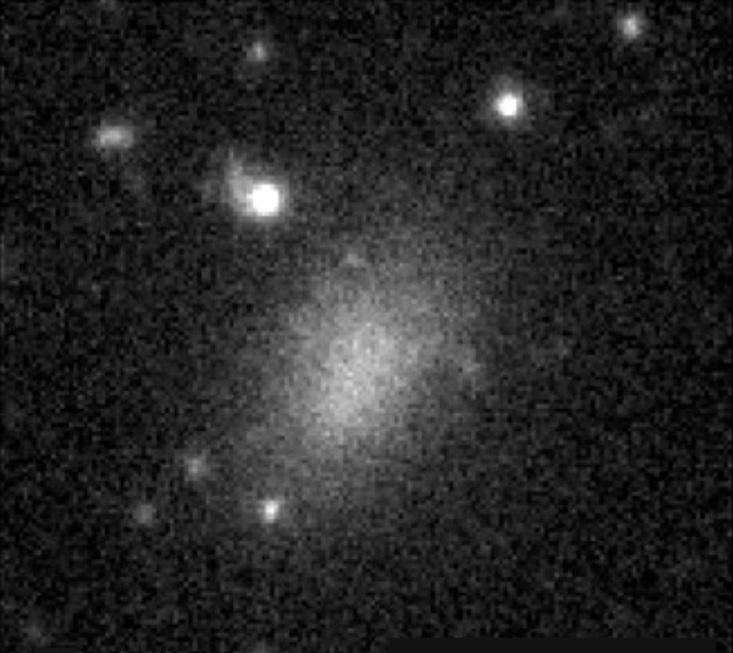
Dragonfly has made Abraham and van Dokkum minor celebrities among hobbyists and professional astronomers alike. Their peers applaud their ingenuity and early success. “Dragonfly is the latest breakthrough in unlocking the diffuse universe,” says Joss Bland-Hawthorn, Director of the Sydney Institute for Astronomy, in Australia. He also appreciates how Dragonfly’s inventors managed to escape the bureaucratic burdens of doing cosmology. “There’s nothing more thrilling than being on the quest for something new, and having your own destiny in your hands,” he says.
Avi Loeb, an astronomer at Harvard University, agrees. He credits Dragonfly for the publication of one of his group’s most recent theoretical papers. In early 2015, he and his co-authors had developed evolutionary models predicting glowing gas emissions “near the outskirts” of galaxy clusters. According to their calculations, however, these emissions were too dim to observe using existing telescopes. Without means to verify their prediction, they had decided it wasn’t worth publishing.
Then, as luck would have it, they attended a colloquium at Harvard University, where Abraham presented some of the first findings from Dragonfly. “We learned that Dragonfly could detect the exact glow we predicted in our equations,” Loeb says. Thrilled, they submitted the paper, which was published this month.
Abraham and van Dokkum can’t yet say how big Dragonfly will get or how much it will be able to see. So far, with up to 24 lenses (they’re still finishing up the 50-lens upgrade), they have been able to pick out objects about a tenth as diffuse as conventional telescopes can clearly resolve. In theory, more lenses should reveal dimmer stuff. But there might be a limit: Factors such as the refractive index of Dragonfly’s lenses and the presence of faint cosmic light pollution, known as galactic cirrus, may put a hard cap on the telescope’s capabilities.
“Whether we can go beyond 50 [lenses] is unclear,” van Dokkum says. “It also depends a bit on how big we want to go. If we want 500 lenses, then we’d need a much bigger operation, and it would start to take over our lives. And then we’d have to look around for a new fun project.”
Patchen Barss is a Toronto-based science journalist and author.


















